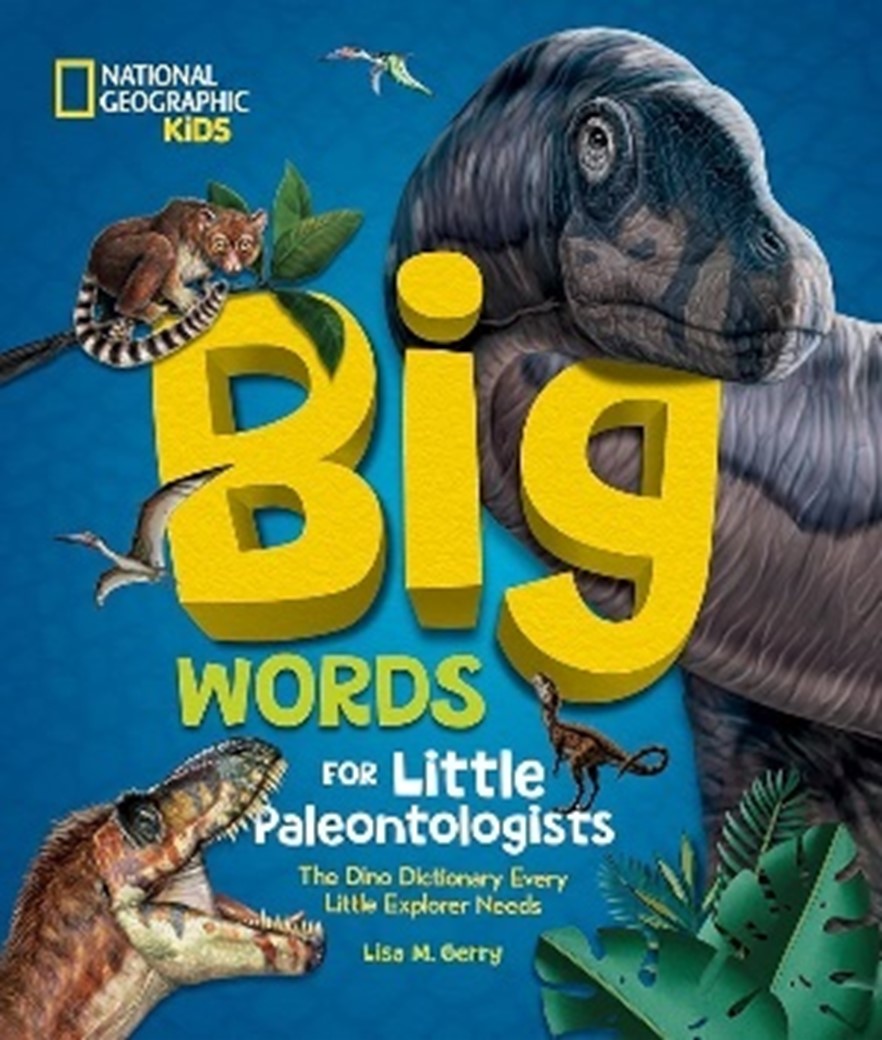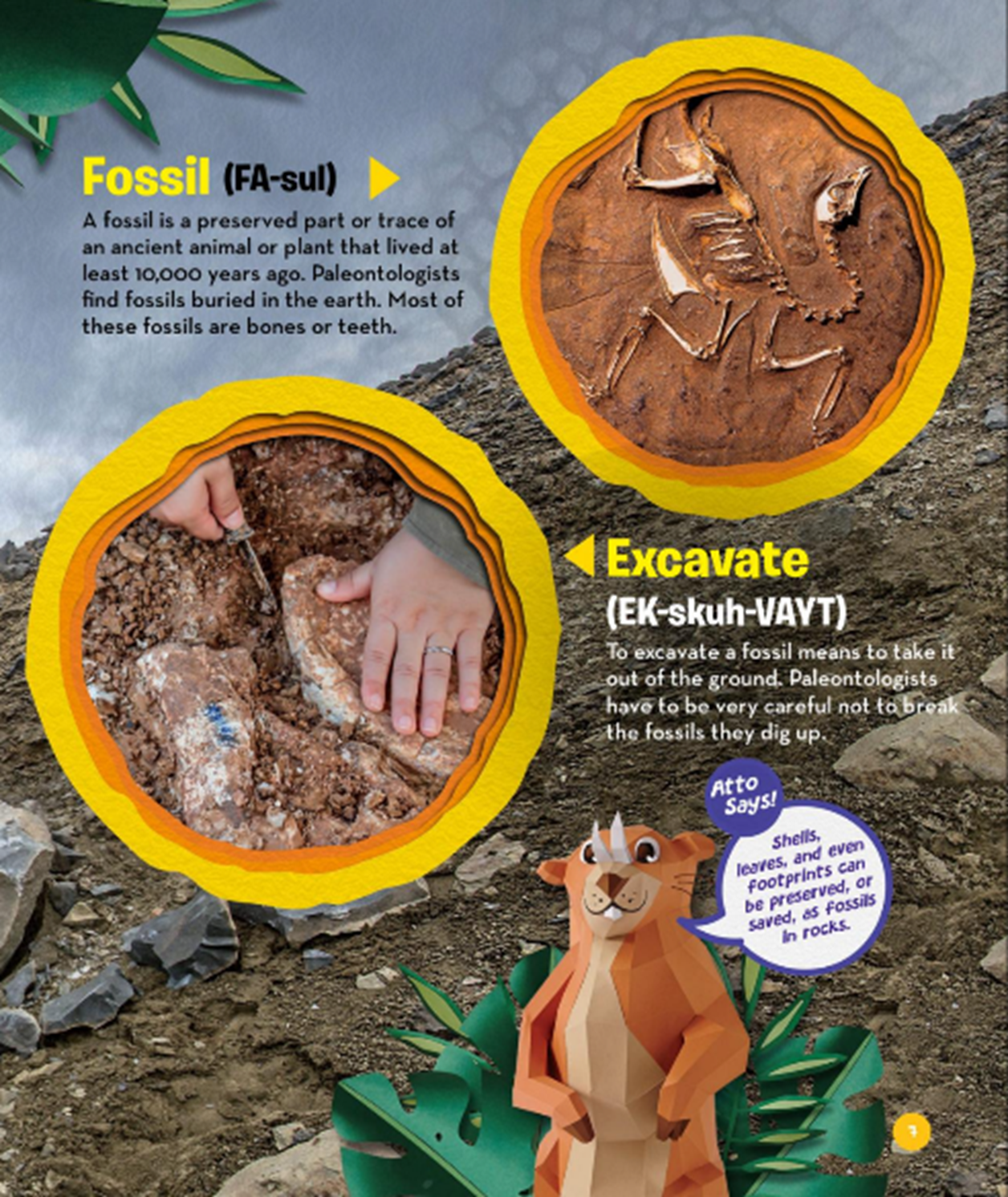This month's Book Nook topic is...
Introducing Rare Vocabulary with
Big Words for Little Paleontologists

A child’s vocabulary is one of the key predictors of reading success. Children who understand more words become better readers. While supporting vocabulary development is important for reading success, a great way to enhance a child’s future understanding of other school subjects like science, history, geography and math is to help them learn more advanced, rare vocabulary. In this Book Nook, we’ll share helpful tips about how to introduce rare vocabulary and support children’s understanding of these more sophisticated words.
The Book:
Big Words for Little Paleontologists by Lisa M. Gerry
Why we chose this book
Choosing a book with rare words often requires us to look beyond typical words we hear in daily conversation. While many children’s books include vocabulary that isn’t used in everyday conversation, information books about specific topics like wild animals or transportation are a great way to introduce rare vocabulary because they often include words that are specialized and focused on a specific topic.
Big Words for Little Paleontologists is a special interest book for young dino enthusiasts. This book is full of rare vocabulary with pronunciation guides, simple definitions and beautiful illustrations and photographs to support the child’s understanding of these rare words. Some rare words in this book are: “excavate,” “awl,” “omnivore” and “paleobotany.” Because these are words we don’t typically read or hear, taking time to highlight these words while you share this book will help expand the child’s knowledge and vocabulary.
Shoot for the SSTaRS
At The Hanen Centre, we talk about making new words “sparkle”, or stand out, by using a strategy called “Shoot for the SSTaRS”. SSTaRS is an acronym that stands for: Stress, Show, Tell, Relate and Say it again. For children to make sense of new vocabulary, rare words can be highlighted and explained using the SSTaRS strategy.
Let’s Shoot for the SSTaRS with the word “excavate.”

Stress
You can make “excavate” stand out from the other words by saying it louder and slower than the rest of the text. You can also pause before and after saying the word.
Show
You can show what a word means by pointing to the picture, showing a prop, or using a gesture or facial expression. In Big Words for Little Paleontologists, you could point to the photo beside the word “excavate” as you say it.
Tell
Give the child a short definition of the word. Definitions of rare words are found throughout this book, for example: “To excavate a fossil means to take it out of the ground. Paleontologists have to be very careful not to break the fossils they dig up.”
and Relate
Help the child connect this word to their own knowledge and experiences by relating “excavate” to other words or experiences they’re familiar with. This makes the new word easier to understand, remember and later use. You could relate the word “excavate” to the child’s experiences by saying something like, “You used your shovel to excavate the shells from the sandbox. When you carefully dug the shells out of the sand, you were excavating them.”
Say it again – and read it again!
One of the best ways to make words sparkle is to read the same book three times. Re-reading a story increases the child’s familiarity and helps deepen their understanding of new vocabulary with more opportunities to discuss new concepts. The more a child hears and talks about a new word, the better they will understand it and be able to use it.
The first time you share Big Words for Little Paleontologists with the child, choose only a few words to highlight using the SSTaRS strategy. After reading the book, try to use the new word(s) in other situations. For example, if you see a backhoe working outside, you could say, “Look, they’re digging a big hole! They’re excavating by taking the dirt out of the ground." By the second or third time you revisit the book, you may notice the child using the new words themselves!
In conclusion...
While children hear many words in a day, just hearing the words isn’t enough to build their vocabulary. When you highlight new words using the Shoot for the SSTaRS strategy, you help deepen their understanding of new words. Sharing a special interest book and highlighting rare vocabulary provides rich learning opportunities that support reading and academic success.
More Resources
The strategies in this Book Nook post are drawn from Hanen’s practical, research-based guidebooks for building emergent literacy. Explore the links below to learn more about how these guidebooks can support you.
For Parents I'm Ready! guidebook
I'm Ready! guidebook
For Educators ABC and Beyond guidebook
ABC and Beyond guidebook
